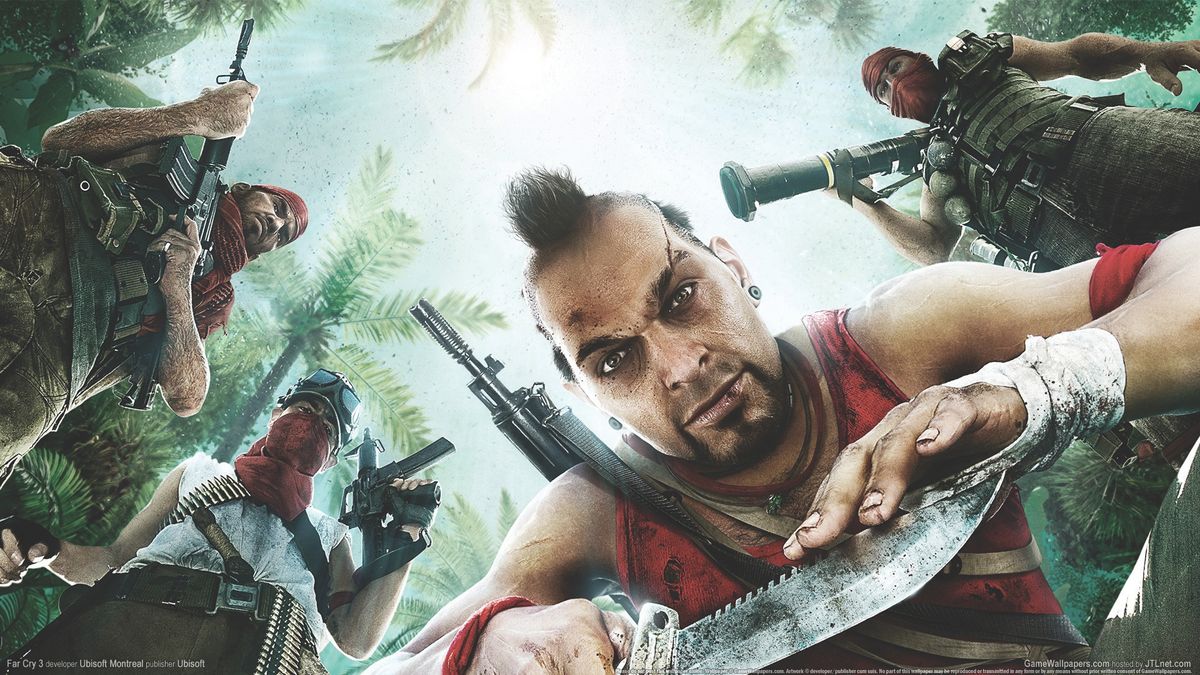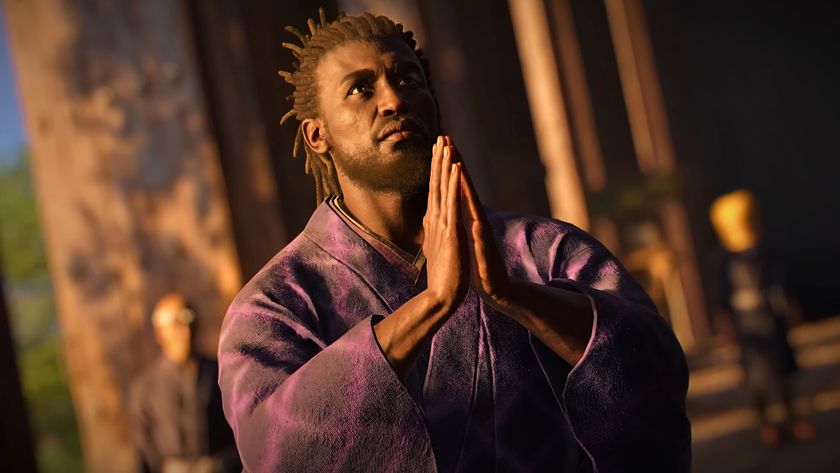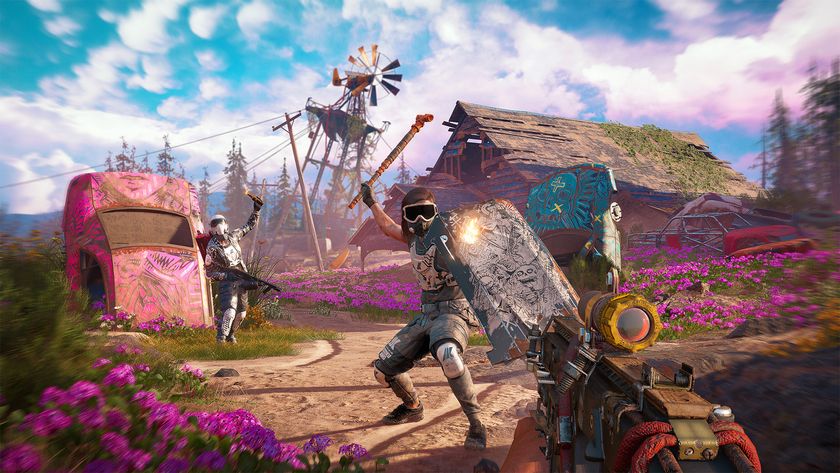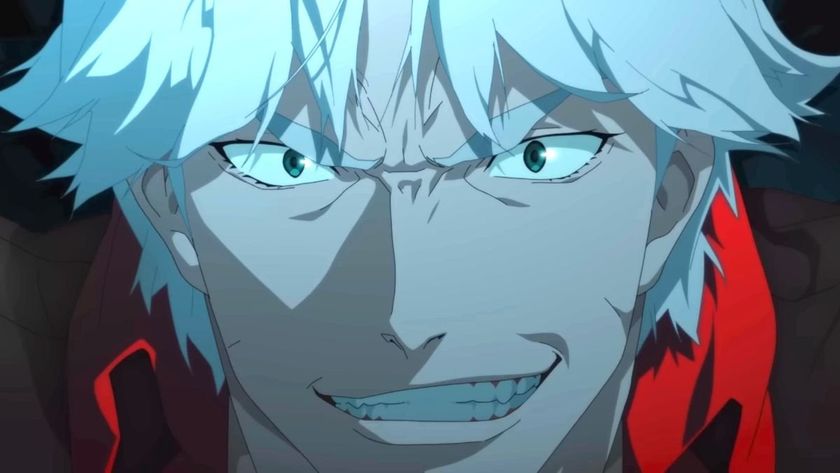How Far Cry 3 set the bar for open world freedom with flawless design and a sly swipe at video game tropes

Any game that takes a bunch of young middle-class kids and throws them into a hostile island in the middle of the Indian and Pacific Oceans and teaches them that maybe – maybe – everything they know about life isn’t quite what they expected... is a game that’s going to get our attention.
When you first boot up Far Cry 3, players are met with an epigraph from Lewis Carroll’s Alice’s Adventures In Wonderland. “In another moment down went Alice after it, never once considering how in the world she was to get out again.” The inclusion of this quote was intentional: it was intended to telegraph to players that protagonist Jason Brody’s journey was about to get surreal.

And Far Cry 3 lives up to that promise. On the surface, it’s a game about a 25-year-old Caucasian male – from Hollywood, Los Angeles – taking a once-in-a-lifetime trip to a whole new world to open his mind and expand his horizons. But there are so many more levels to the game that grab you and bring you in, even before you get to play around with Far Cry’s exemplary open world mechanics and explore the lush South Pacific realm you’ll be calling home over the next 30 hours.
The game is – unapologetically – a fantasy. It’s a power trip. It’s the story of a rich white kid travelling to a foreign climate, a story about allowing protagonist Jason Brody to enact some of the most ridiculous fiction ever in his own life, and let players see through his eyes. The most provocative trailer for Far Cry 3 showed the protagonist having sex with a princess named Citra. This happens in front of a crowd of onlookers. “I will lead you to glory!” shouts Jason on climax. ‘Step into the insanity’ the trailer tells you. Play Far Cry 3.
Far Cry 3 reveals a story about white colonialism, a criticism of how video games let us do what we like to foreign populations with little or no consequences
It’s a complex narrative that – on the surface – looks like your standard video game power trip aimed at a very specific audience of straight, white 20-somethings. But dig a little deeper, and Far Cry 3 reveals something else to you – a story about white colonialism, a criticism of how video games let us do what we like to foreign populations with little or no consequences. Depending on which ending you choose to complete in Far Cry 3, you can see a variety of video game tropes challenged. You can (spoilers!) choose to fight the ‘save the Princess’ trope by thinking you’ve saved the Princess, but actually having the Princess kill you – deceiving you all along for her own nefarious ends.
Far Cry 3 carried on the trend of Far Cry games playing with the player, testing them, asking them if they’re really paying attention to what’s going on. Far Cry saw a gung-ho soldier rescue a journalist and give the player open-world freedom like they hadn’t seen before, Far Cry 2 saw a well-researched, believable and ecological viable African open world, and Far Cry 3 decided to push that further, by adding one of the most convincing unreliable narrators gaming has ever seen into the mix.

The third game in the series brought a real sense of open-ended interpretation to the series – allowing players to take what they wanted from their experience, rather than swallow a prescribed, pre-established notion of a story that had a defined beginning, middle and end. It offered villains that could be doubted – gave the player freedom to use tigers to attack enemies, die from infectious diseases and complete practically everything with a bow and arrow carved from nothing but the island’s native resources... if that’s what you wanted to do.
Sign up to the 12DOVE Newsletter
Weekly digests, tales from the communities you love, and more
And that’s where Far Cry has always excelled: it merges the exotic climbs of new lands with the open-world mechanics Ubisoft came to master in the middle of the last generation. With Far Cry 3, Ubisoft managed to amalgamate technical proficiency – massive areas, impressive graphics, impeccable sound design – with a narrative that pushed relatively new ground, with a series of tools that made the sandbox so much more than just a Grand Theft Auto-esque foray into violence and exploitation. It thought about how AI interacted with its environment, it thought about how local predators and prey could impact the island’s ecosystem, and it thought about everything you – the player – might do to take advantage of that.

One of the most important aspects of Far Cry 3’s success was its progression system – for every story mission you completed and for every narrative beat you hit, the game rewarded you mechanically, too. Through skill trees, crafting, weapon upgrades and a general learning curve with the initially overwhelming controls, the game eased you into its world, slowly allowed you to feel more comfortable, eventually letting you basically do what you wanted: live that power fantasy it advertised to you for so long. Become the king of a brave new world, a champion of sex, violence and control.
Are those Alice In Wonderland quotes suggesting this is all a lie – a fabrication from the mind of a traumatised dudebro that couldn’t handle a run-in with pirates
Some players didn’t appreciate this, and instead of seeing the game as a commentary on a series of bad videogame tropes, they just saw the tropes themselves in-game (always a problem when trying to mock something by being something... see also Deadpool: The Game and Duke Nukem Forever). So, while some celebrate Far Cry 3 for being a subtle send-up of video gaming’s more problematic shooter tropes, others see a game celebrating racism, sexism and misogyny. Are you supposed to believe this story Jason Brody is recounting about his liberation of a mysterious island, where he has all the sex and does all the killing? Or are those well-placed Alice In Wonderland quotes suggesting that actually, no, this is all a lie – a fabrication from the mind of a traumatised dudebro that couldn’t handle his run-in with some pirates?
The experience, either way, is an important one, and allowed Far Cry to continue its conquest of the open-world, first-person shooter genre. It allowed Ubisoft to continue experimenting and iterating in a genre it was quickly coming to dominate (radio towers or not), and allowed for one of the bravest pieces of standalone content of the last decade of gaming see a release: Far Cry 3: Blood Dragon.
Blood Dragon was a departure from Far Cry’s so-far, so-serious setup. This offshoot of the main series used all the same tools the parent game used – an open-world sandbox viewed in the first person – but applied it to a much more sardonic, thematic project. Mechanically, the game is identical to Far Cry 3 but that’s about where the similarities end. The pseudo-sequel isn’t concerned with being a critique of colonialism and violence, or pretending to be a glorification of the white saviour trope, but instead opts to be a pastiche of ‘80s Saturday morning cartoons – offering a neon-laced combination of nostalgia and bloodlust.

The game is stupid. It knows it is (presumably). Even from the setup, you gather this game isn’t playing it straight: in the ‘future’ of 2007, most of the world has been ravaged by nuclear blasts. Everything is annihilated. Cyber commando Rex ‘Power’ Colt is sent on a mission to unroot the despicable commander Sloan and destroy his army of eponymous Blood Dragons – dangerous creatures that can be used to your advantage in the open world of Blood Dragon.
The plot has everything – time travel, betrayal, explosive romance, one-line quips, a training montage. The game straight up lampoons the action movies of the ‘80s and the games they in turn went on to inspire. It has more of a focus on stealth than its parent game, and introduces a few revised mechanics (the bow in Blood Dragon is possibly one of the best bows in gaming – notching headshots with that thing is immensely satisfying).
The voice acting is poor, the production values are occasionally sketchy, everything seems to have VHS scanlines running over the top, and it’s perfect. It sold amazingly well. It was a complete and intentional sidestep from the direction Far Cry had – and would continue to – tread. This new ‘80s VHS vision of the future’ (as Ubisoft put it) was initially announced on April Fool’s Day, leading many to suspect it wasn’t real. As more information about the title became available – including a leaked soundtrack made in collaboration with synthwave band Power Glove – people started to get excited.

This was a new taste of Far Cry, a new example of what could be built in the still-operational and still impressive Dunia Engine (which translates into Arabic as ‘World Engine’, by the way). It showed the series was more than a one-trick pony, and little thematic spin-offs could extend the life of its various instalments. Since then, we’ve had a Yeti-based expansion for Far Cry 4, seen an entire Far Cry game set in the realms of prehistory, and even aspects of Blood Dragon’s trippy setup infiltrate main entries in the series. Ubisoft’s weird little experiment did wonders for the series, and thanks to being a budget standalone release, likely got a lot more people interested in the series, too.
The fact Far Cry 3 sold 4.5 million units in its first year, and went on to sell over 10 million units in the years after its release says a lot about the series’ place in the sandbox genre. Blood Dragon – as a standalone piece of content – sold over a million copies within months of its release. It remains the fastest-selling downloadable title in Ubisoft’s lengthy history. Both games helped propel and establish Far Cry as a mainstay in gaming – two different but potent statements from Ubisoft about its place as a publisher and a developer.
‘You might know us from Assassin’s Creed’, the games seemed to suggest, ‘but that’s not all we have to offer.’ Ubisoft head Yves Guillemot was very candid about his belief of the open world being the future of gaming, and in taking risks with Far Cry 3 and Blood Dragon, he proved that he was right, and that Ubisoft could be trusted with more than just Assassins and history lessons... it could be trusted evolving an entirely separate genre.
This article originally appeared in Xbox: The Official Magazine. For more great Xbox coverage, you can subscribe to OXM here.
Dom is a freelance writer covering games, music, and pop culture. He's written for GamesRadar, TechRadar, Red Bull, the Daily Star, The Guardian, TrustedReviews, PocketLint and more. He's now Features Editor at VG247 and a columnist at NME.














